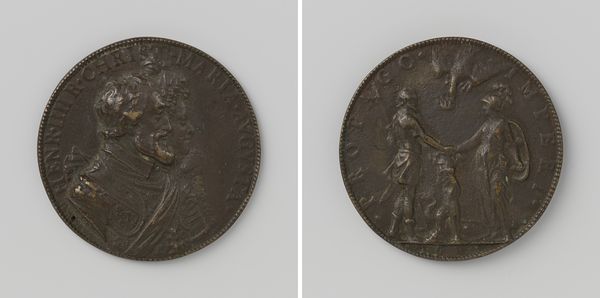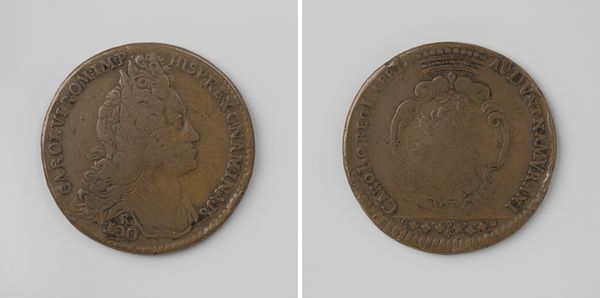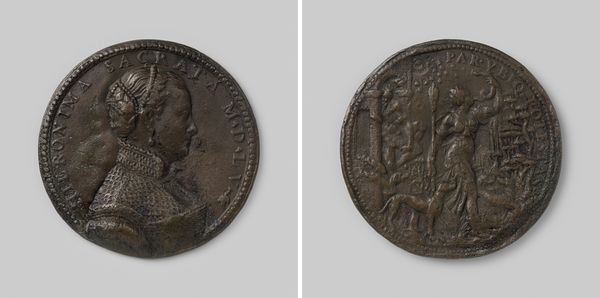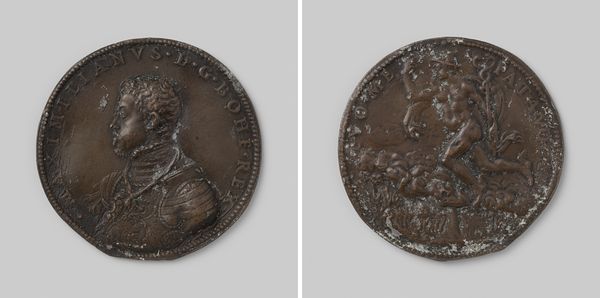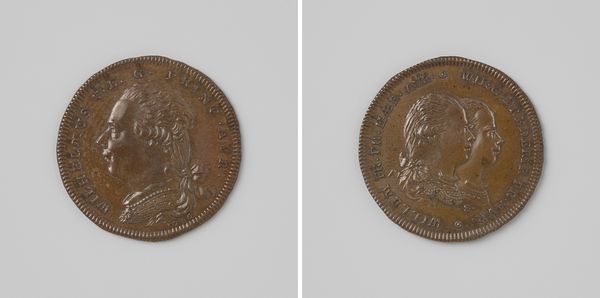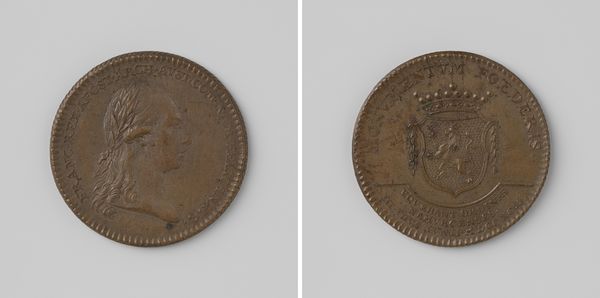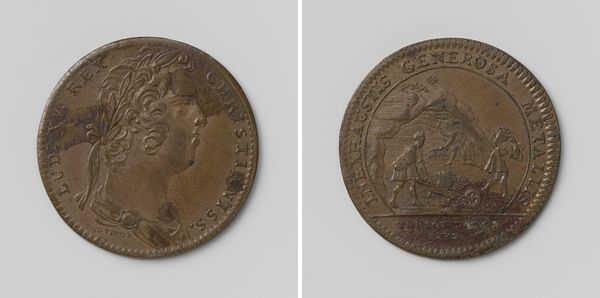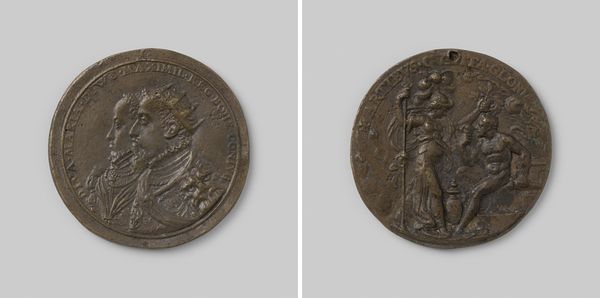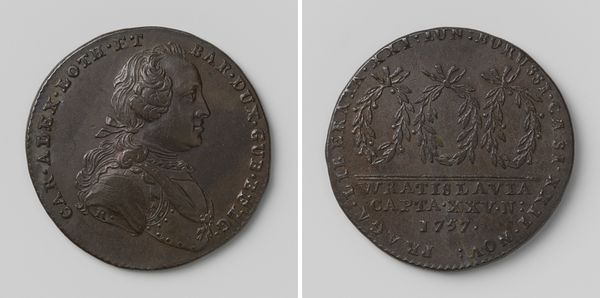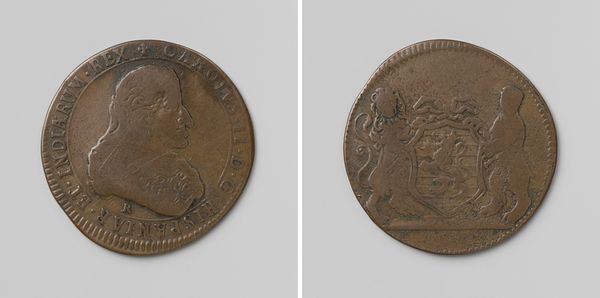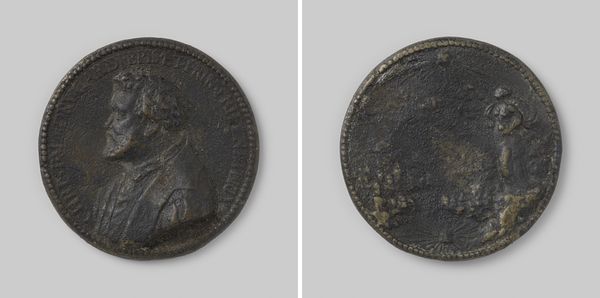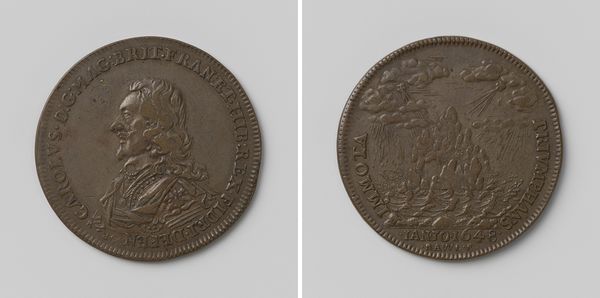
metal, relief, bronze, sculpture
#
portrait
#
metal
#
sculpture
#
relief
#
bronze
#
figuration
#
11_renaissance
#
sculpture
#
history-painting
#
italian-renaissance
Dimensions: diameter 4.1 cm, weight 262 gr
Copyright: Rijks Museum: Open Domain
Curator: This bronze relief presents us with a portrait of Filips II van Spanje, or Philip II of Spain, from 1556. It was created by Gianpaolo Poggini. Editor: My first thought is its texture. The relief, almost coin-like, makes it feel both precious and… common, if that makes sense. The scale seems to contribute to that duality, something almost like a prototype for mass production. Curator: The choice of bronze speaks volumes about Philip's reign, though. Bronze was the material of rulers, communicating permanence, authority, power. The creation of multiple examples surely played a role in disseminating his image widely. It's less about mass production in the modern sense and more about controlled replication to ensure a consistent representation of royal authority. Editor: Interesting! The medium itself is really doing some heavy lifting there, then, isn't it? Looking closer, I am curious about how the material shaped Poggini’s technique—did the desire for detailed inscription push a need for more refined tool work on this particular type of relief? The circular edge almost suggests a mould of some kind. Curator: Undoubtedly. Poggini had to be keenly aware of how bronze cast. Inscriptions and royal image go together. This particular moment in history was when royal branding came into its own. I see him on the front, then a horseback figure on the other side--I read the inscription: “defender of the Catholic faith." How very like Philip! This isn't just art; it's political machinery. Editor: A smooth operation on both faces of the bronze, with some intentional symbolism too. Looking at this bronze from that perspective helps frame what feels almost like a tangible piece of ideological power. What a perfect example of making and meaning aligning under the force of political might! Curator: Precisely! And when you consider the broader religious and political landscape of the time—the Reformation, the Counter-Reformation, the various religious wars, Philip's role is all the more impactful. I have truly enjoyed discussing with you! Editor: Absolutely. Examining the artistic process coupled with those social forces is how we really start to understand artwork like this.
Comments
No comments
Be the first to comment and join the conversation on the ultimate creative platform.
